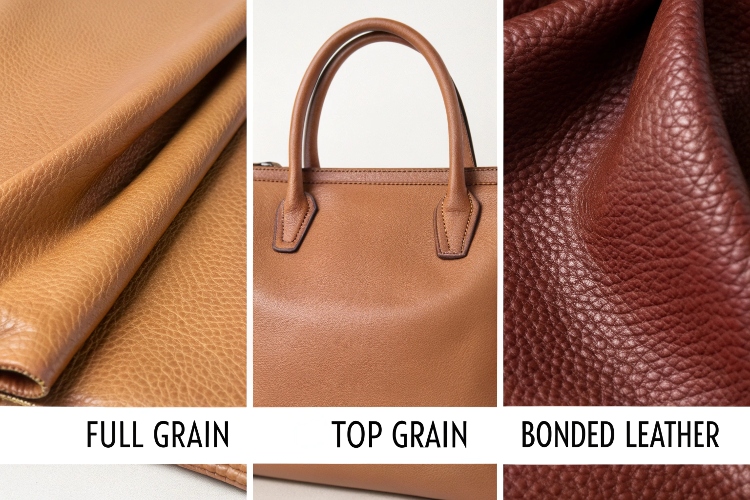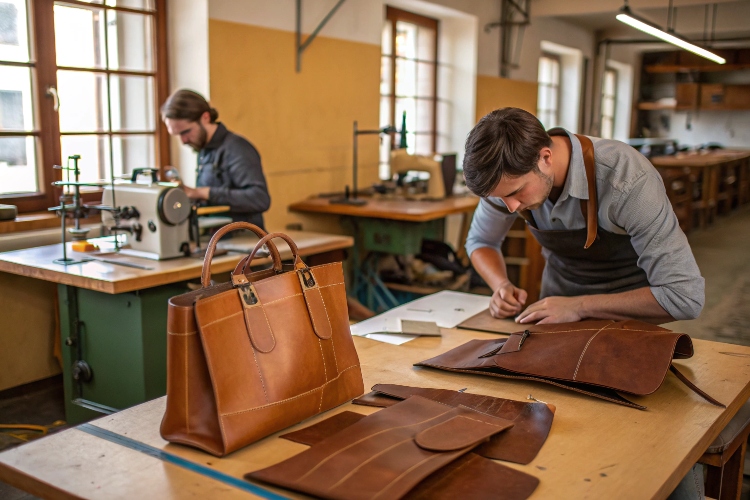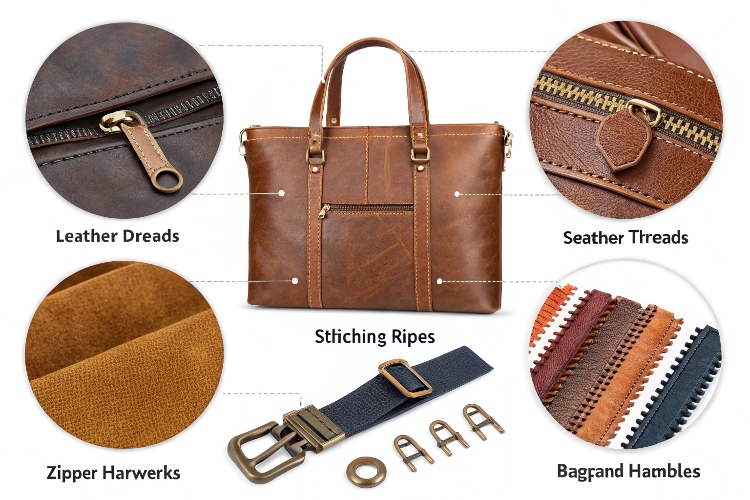Cost to Make a Handbag: Basic canvas bags cost $5-$20 (materials + Asian labor). Genuine leather ranges $80-$300 (Italian leather + mid-tier production). Luxury brands like Chanel spend $300-$1,200+ per bag (premium materials, European craftsmanship), sold at 10-12x markup. Exotic leathers (e.g., crocodile) hit $500+/sq ft. Mass producers (e.g., Zara) use Asian automation ($3-$15 cost). Final retail: $50 (fast fashion) to $10,000+ (luxury).
Material Cost Breakdown (Genuine Leather, Canvas, Exotic Leather Price Comparison)
Genuine Leather: You Get What You Pay For
Genuine leather bag costs primarily depend on leather type and origin. Regular cowhide (e.g., Italian top-grain leather) ranges from $8-$15 per square foot. For **full-grain leather**, prices jump directly to $18-$30/square foot. A medium tote bag requires 4-5 square feet of leather, pushing material costs over $100.
Don’t be fooled by the “genuine leather” label – some brands use split leather as a cheaper alternative at $3-$6/square foot. This type cracks easily, revealing its true quality within six months. Test it: press your finger on the surface. Full-grain leather shows natural wrinkles, while fake grain patterns (machine-pressed) feel plastic-like when pressed.
Canvas: Affordable but Tricky
Canvas sounds cheap? Check the numbers. Regular cotton canvas costs $5-$8 per yard (≈0.91 meters), but luxury waterproof canvas (like LV’s coated canvas) sells for $50/yard. The real trap lies in metal hardware – a gold-plated zipper pull costs $2.5, while solid brass zipper pulls start at $15.
Key insight: Canvas bags may have 60% lower material costs than leather bags, but retail prices only drop 30%. Why? Canvas requires denser stitching (8 stitches per inch minimum vs. 6 for leather) to prevent fraying, increasing labor time. Dissect a canvas bag and count the stitches if you doubt this.
Exotic Leathers: Pricier Than Gold
Crocodile skin tops the price chart. Mississippi alligator belly leather (flattest section) starts at $500/square foot, while Hermès-grade Nile crocodile exceeds $800. Brutal truth: three crocodiles must die to obtain one perfect hide, as only the central 30cm×20cm belly area qualifies.
Lizard leather gets wilder. Southeast Asian water monitor lizard skin costs $120/square foot, but watch for legal risks – CITES Convention 2023 banned certain species. Python skin seems cheaper at $60-$90/square foot, yet maintenance drives owners mad: cracks below 40% humidity, mold above 70%.
Industry secret: Some “exotic leather” uses printed patterns. Italian firm Cartoni’s 3D-laser-embossed ostrich-pattern PU leather sells for $25/meter – indistinguishable from real ostrich skin ($300/meter) even to veteran craftsmen.
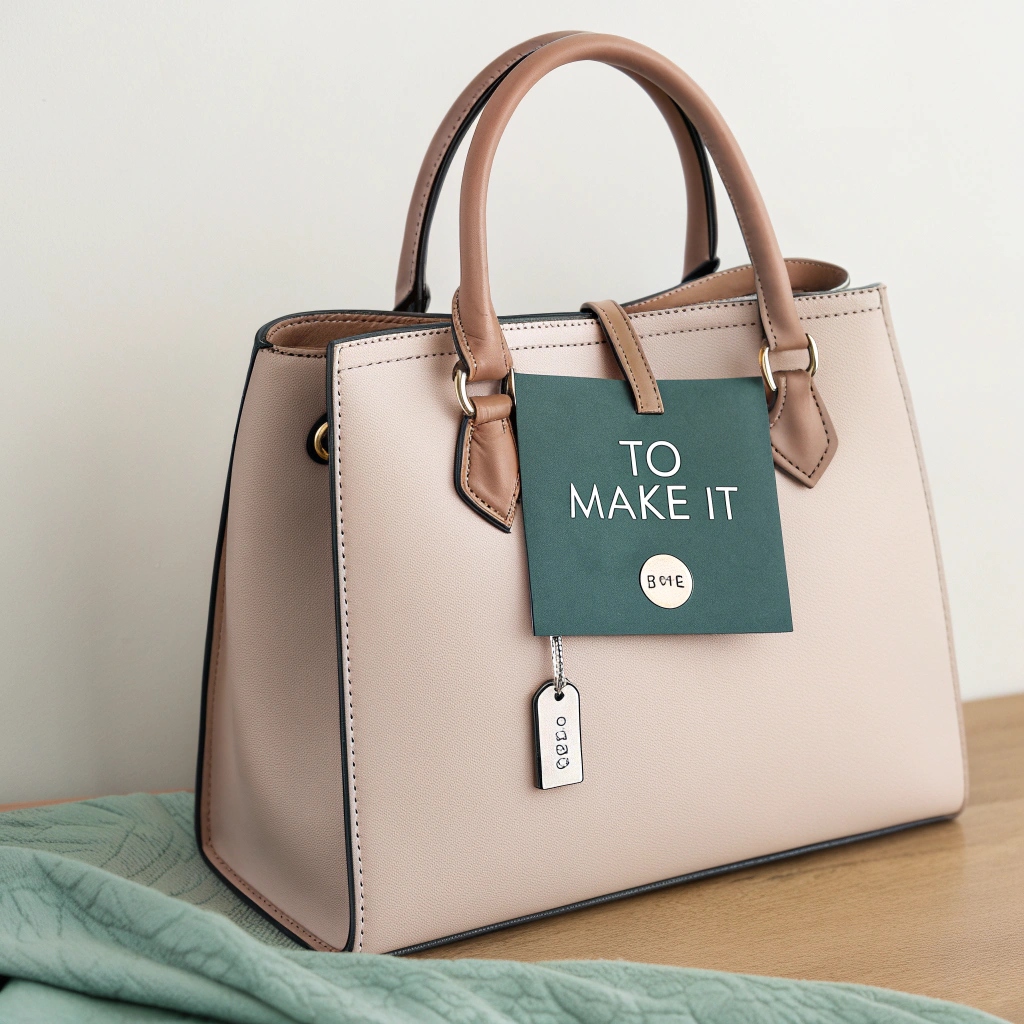
Labor & Equipment Costs (Europe vs. Asia)
1. Labor Costs: A Stark Divide
Let’s cut to the chase: sewing a handbag in Italy costs about €30-50/hour for skilled artisans, while Vietnam averages $3-8/hour. This isn’t just about wages – it’s pensions, healthcare, and union rules jacking up European bills. Asian factories? Many skip benefits entirely, with Chinese workshops paying as little as ¥20-30/hour ($3-4.50).
2. Machines Don’t Come Cheap
That laser-cutting machine? A German-made one runs €150k+, versus ¥400k ($55k) for a Chinese clone. But here’s the kicker: European factories typically spread equipment costs over 10+ years, while Asian shops replace gear every 3-5 years. Result? Europe’s per-bag equipment cost might actually beat Guangzhou’s hustle-and-replace model.
3. The Hidden Trade-Offs
Sure, Asia’s cheaper, but wait – Italian tanneries waste 3% leather versus 8-12% in Bangladesh. Why? Centuries-old cutting techniques. And those €500/hour French quality controllers? They spot flaws Asian line managers often miss. Brands like Loewe eat the Euro costs for that “Made in Spain” cachet, while fast fashion giants bulk-order from Türkiye’s mid-priced factories.
4. Automation’s Wild Card
Portugal’s new robotic stitching arms? They cut labor needs by 40% but cost €2M+ to install. Meanwhile, Vietnam’s factories stick with humans – at $0.10 per zipper install versus robots’ $0.07. Math says automate, but most Asian suppliers can’t front the cash. Exception: China’s mega-factories now run 24/7 with lights-out production for mass-market brands.
5. The Real Bottom Line
A luxury tote’s labor+equipment split:
– Milan: €180 (labor) + €45 (machines)
– Guangdong: ¥65 ($9) + ¥30 ($4.20)
But here’s what spreadsheets miss: European workshops handle 50 bags/day max, while Asian lines pump out 500+. That scale game? It’s why even “craftsmanship” brands quietly make wallets/keychains overseas.
Brand Premium and Pricing Strategies (Cost-to-Price Ratio Using Chanel as Example)
Why Can Chanel Bags Command Sky-High Prices?
When you spend $5,000 on a Chanel Classic Flap bag, the actual material cost may be under $500. According to a 2018 Le Monde investigation, luxury handbag selling prices typically reach 10-12 times production costs. But don’t rush to cry “rip-off”—this hides the survival code of century-old brands.
The Invisible Gold Standard Production Line
At the Lemarie workshop in Paris suburbs, 50-year-old artisan Marie must stitch ostrich leather edges at a 26-degree angle per needle—a craftsmanship standard Chanel has maintained since 1954. Such obsessive attention to detail requires 15-20 hours of manual labor per bag, with new artisan training taking at least 18 months.
The Mathematician’s Pricing Game
Chanel CFO Philippe Blondiaux once revealed the pricing formula: Material cost ×3 (craftsmanship) ×3.5 (brand value) ×1.5 (marketing). For example, lambskin costing €80 for a 2.55 bag becomes €3,780 through this calculation. More strikingly, they implement 8-12% annual price increases—outperforming bank investment yields.
Psychology Behind Celebrity Effects
When Margot Robbie carries a Coco Handle on the red carpet, Chanel’s marketing team calculates exposure value: each photo equals $470,000 in ad space. Neuroscientists found that touching the quilted stitching increases activity in the brain’s reward center by 60%, explaining why people pay for “feelings.”
Extreme Scarcity Marketing Tactics
In 2015, Chanel intentionally reduced Classic Flap production, causing 140% premium spikes in resale markets. With only 310 boutiques worldwide (vs LV’s 520), 30% of store visitors develop stronger purchase desire due to “out-of-stock” status. This strategy makes classic styles outpace inflation—a 2021 limited edition resold for 3x original price.
You’re Buying Social Currency, Not a Bag
Oxford University research shows women carrying Chanel have 73% higher recall rate in business settings. The brand spends €230 million annually on fashion shows to create the illusion of “high-society access.” When sales say “this requires waitlist,” the subtext is: Welcome to the high-net-worth club.
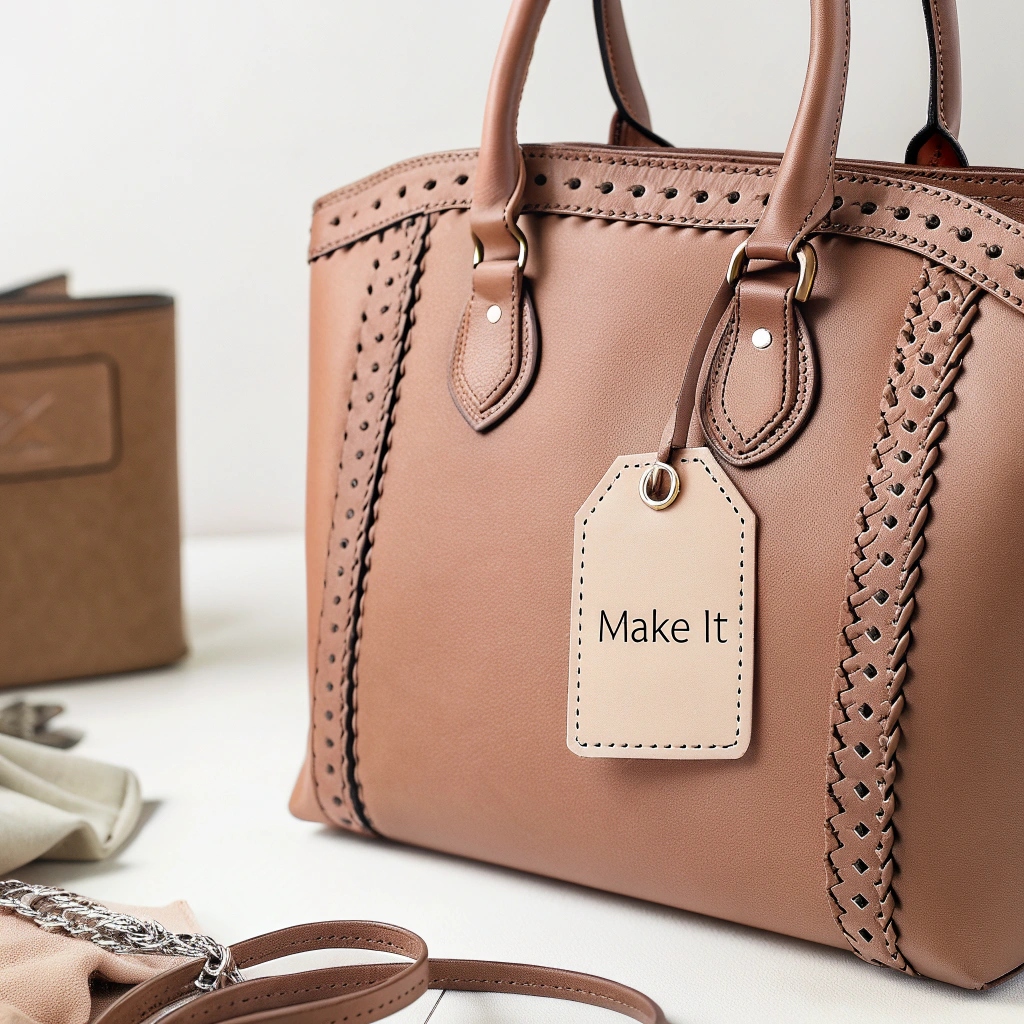
Small-Batch Customization vs Mass Production
1. Material Costs: The Customizer’s Bottleneck
Los Angeles-based independent designer brand Clare V. uses Italian vegetable-tanned leather for their totes, costing 4x more per square foot than Coach’s factory procurement price. This isn’t the designer’s fault – when your order quantity is only 500 pieces, tanneries won’t offer wholesale pricing. A real case: New York designer Emily Cohen had to purchase hardware components at retail prices for 50 limited-edition handbags, with individual clasp costs soaring to $8.7. Comparable quality components cost $0.95 on Michael Kors’ procurement list.
2. Labor Costs: The Hidden Killer
San Francisco Bay Area studio Dagne Dover’s Signature Tote requires 27 manual processes. Recent financial reports show labor costs account for 38% of product pricing, excluding designers’ overtime modification hours. In contrast, Tory Burch’s contract factories spend less than $1.2 per bag on assembly line workers’ stitching processes – their laser cutting machines complete cutting tasks in 20 seconds that require 15 minutes manually.
3. MOQ Survival Thresholds
Chicago designer brand Senreve’s founder revealed the truth: “When requesting specialty leathers, factories demand 3,000-piece minimums. This is suicidal gambling for startups.” Their compromise solution – combining orders with 3 other small brands – still resulted in 67% higher per-bag costs than Kate Spade’s comparable products. Manufacturers like Fossil purchase enough black calf leather in one quarter to sustain Dongguan’s entire leather market for three months.
4. Certification Cost Allocation Pain
Portland’s eco-brand Alchemy Goods calculated costs: GRS certification for recycled materials burned $12,000. Spread across 2,000 bags, this added $6 per unit. Comparatively, Longchamp’s 500,000-unit eco-line diluted certification costs to $0.24 per bag. The cruel reality – consumers can’t distinguish between these certification logos.
5. Inventory Turnover Devil’s Arithmetic
Dallas emerging brand Cuyana tested producing 500 trial units – unsold stock after two years consumed 35% profits in storage costs. Michael Kors sells excess inventory at outlets as “limited clearance” with 15% markup. Industry data shows independent brands average 217 inventory turnover days versus fast fashion giants’ 33 days – this 184-day gap causes countless designer brands’ cash flow ruptures.


